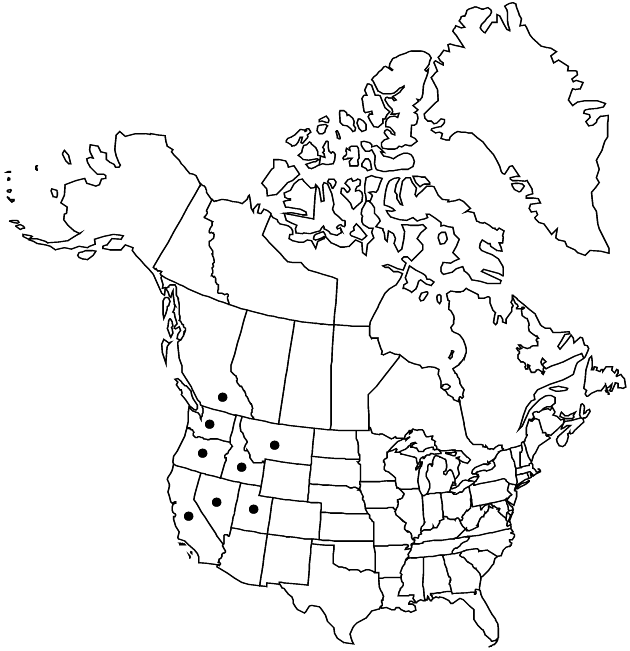Crepis occidentalis subsp. pumila
Publ. Carnegie Inst. Wash. 504: 128. 1938.
Endemic
Basionym: Crepis pumila Rydberg Mem. New York Bot. Gard. 1: 462. 1900
Revision as of 20:09, 29 July 2020 by imported>Volume Importer
Plants 10–40 cm. Stems (with definite primary-axes, branched distally) tomentulose, eglandular. Leaves 10–20 × 2–5 cm, coarsely dentate or pinnately lobed (lobes closely spaced). Heads 5–15. Peduncles tomentulose, stipitate-glandular. Phyllaries mostly 8, usually ± tomentose (at least proximally), rarely eglandular. Florets 12–20. Cypselae brown.
Phenology: Flowering Jun–Jul.
Habitat: Serpentine slopes, open pine woods
Elevation: 800–1800 m
Distribution

B.C., Calif., Idaho, Mont., Nev., Oreg., Utah, Wash.
Discussion
Selected References
None.
Lower Taxa
None.
"fine" is not a number."fine" is not a number.
... more about "Crepis occidentalis subsp. pumila"
tailed +
introrse +
connate +
tapered;acuminate;acute;acuminate;acute +
scarious +
developed +
absent +
hirsute +
papillate +
corymbiform +
persistent +
falling +
continuous +
decurrent +
elliptic +
runcinate +
winged +
ribbed +
1;15 +
unequal +
filiform +
stigmatic +
barbellulate +
coarse +
absent +
reduced +
swollen +
absent +
reduced +
yellow +
monomorphic +
brown +
curved +
dimorphic +
subcylindric +
6mm;10mm +
straight +
distinct +
ligulate +
proximal +
12;20 +
bisexual +
dispersed +
appressed +
subsessile +
singly +
indeterminate +
5;15 +
homogamous +
surrounding +
cylindric +
petiolate +
alternate +
lobed;dentate +
toothed +
prickly +
scarious +
2-carpellate +
inferior +
attached +
anatropous +
yellowish white +
persistent +
falling +
coarse +
equal +
fine +
not bracteate +
inflated +
tough +
thick +
connate +
eglandular +
persistent +
tomentose +
subequal +
equal +
Publ. Carnegie Inst. Wash. +
1938 +
epaleate +
pitted +
convex;flat +
strong +
spiculate-roughened +
fibrous +
exalbuminous +
modifed +
1;2 +
Endemic +
alternate +
eglandular +
stout +
erect +
tomentulose +
2-branched +
hirsute +
papillate +
deep +
Crepis occidentalis subsp. pumila +
Crepis occidentalis +
subspecies +
perennial +